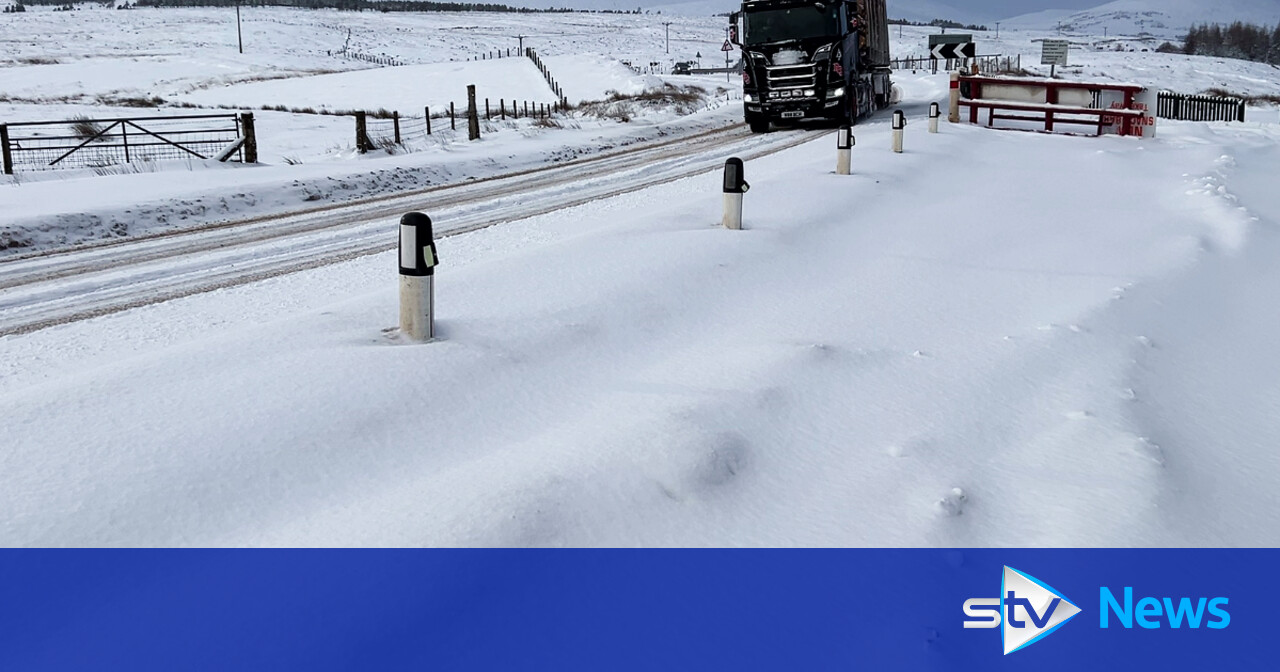World
Immigration fuels Scotland’s biggest population increase since 1940s

That is up 43,100 from the middle of 2022, a 0.8% increase, and the biggest jump in one year since 1946-1947, when a large number of people were demobilised from the military and returning from overseas postings following the end of World War II.
NRS said that immigration was the main driver of population growth, as people moving to Scotland from abroad and elsewhere in the UK continued to boost the country’s population.
In the year to mid 2023, international immigration into Scotland was 82,800 and international emigration from Scotland was 35,100, resulting in net international migration being +47,700.
READ MORE: Migration figures double in Scotland as new stats show highest level in a decade
The number of people moving to Scotland from outside the UK increased by around 47% in the year to mid-2022, and has remained at roughly the same level in the year to mid-2023.
Meanwhile, more people moved to Scotland from the rest of the UK than moved to the rest of the UK from Scotland in the year to mid-2023.
48,400 people moved from the rest of the UK to Scotland, while 34,500 people moved from Scotland to the rest of the UK, resulting in net migration from the rest of the UK being +13,900.
In contrast, deaths outnumbered births by the largest amount on record, with 19,100 more people dying than being born.
There were also 119,600 moves between council areas in Scotland over this period. However, this does not affect Scotland’s total population.
NRS head of demographic statistics Esther Roughsedge said: “The main driver of population growth over the year was people moving to Scotland from abroad and other parts of the UK.
“Almost two-thirds of people moving to Scotland came from outside the UK.
“We also saw a fall in the number of people leaving Scotland.
“Without migration into Scotland, the population would have fallen. Deaths outnumbered births by the highest amount on record. There were 19,100 more deaths than births.”
Net international migration was at 47,700 in the year to mid-2023 while net migration between elsewhere in the UK and Scotland was at 13,900.
READ MORE: Glasgow city centre population increases by third as plan to meet 40k target on track
The population estimates report showed that migration has been adding to Scotland’s population for the last 23 years, as more people have moved to Scotland than have left.
It also showed that deaths have outnumbered births in each of the last nine years, with the year ending June 2023 the largest difference on record.
Scotland’s population is getting older, the data also showed. More than a fifth of Scotland’s population were 65 and over, with 16% aged zero to 15 years. This was attributed to the baby booms of the previous century and the falling birth rate.
The populations of the larger cities have grown the most between mid-2022 and mid-2023. City of Edinburgh grew by 1.7% or 8,680 people, Glasgow City by 1.6% or 9,920 people and Aberdeen City by 1.6% or 3,500 people.
In contrast, the populations of a number of rural and island council areas have fallen in the year to mid-2023.
The population of Na h-Eileanan Siar has fallen by 0.3% (-90 people), Scottish Borders by 0.2% (-190 people) and Argyll and Bute by 0.1% (-120 people).
The population of council areas in Scotland ranged from 631,970 in Glasgow City to 22,000 in Orkney Islands.
In the year to mid-2023, net migration was positive in all of Scotland’s 32 council areas. In contrast, natural change (births minus deaths) was negative in all council areas. These estimates reflect a revision to the mid-2022 population estimates (published on 8 October 2024) which saw the estimated population of Scotland decrease by 700 people or 0.01% from the figure originally published.
Population estimates are based on the census and are updated each year to account for population change from 1 July to 30 June. They are based on the usually resident population which covers people living in Scotland for a period of at least 12 months, whatever their nationality.
The estimates of international migration into and out of Scotland which inform these population estimates are produced by the Office for National Statistics (ONS).










